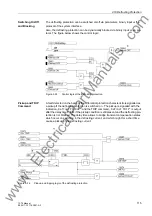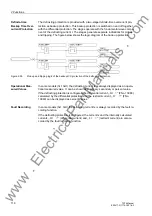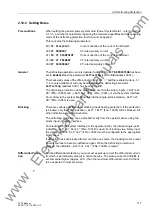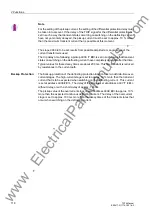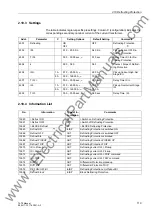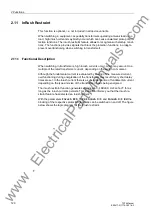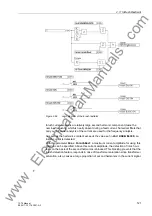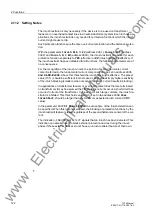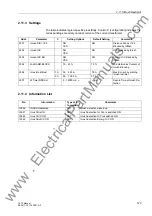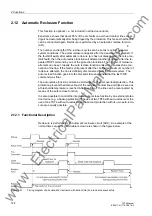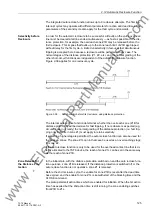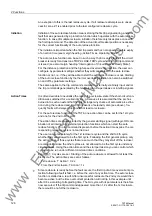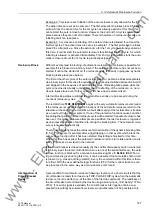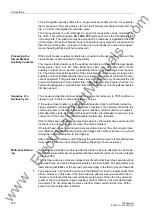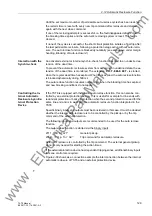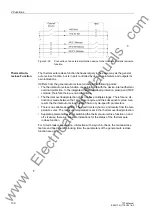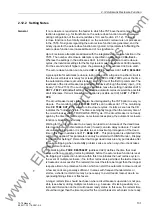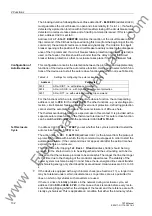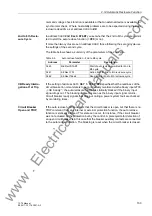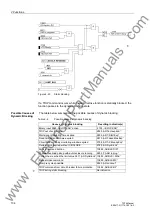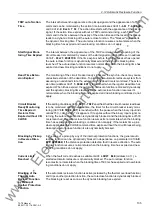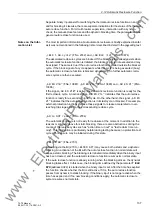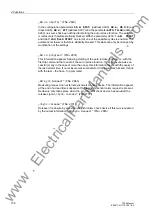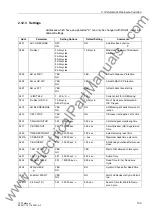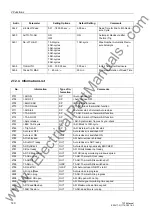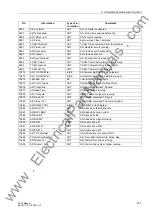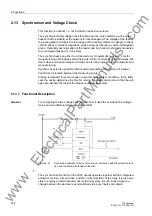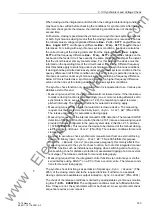
2 Functions
128
7ST6 Manual
E50417-G1176-C251-A3
This interrogation usually suffices for a single reclosure scheme. Since, for example,
the air pressure or the spring tension for the circuit breaker mechanism drops after the
trip, no further interrogation should take place.
The time needed by the circuit breaker to regain the ready state can be monitored by
the 7ST6. This monitoring time
CB TIME OUT
starts as soon as the CB indicates the
not ready state. The dead time may be extended if no readiness is signalled at the end
of it. However, if the circuit breaker does not indicate its ready status for a longer period
than the monitoring time, reclosure is locked out dynamically (see also above under
margin heading „Blocking of Auto-reclosure“).
Processing the
Circuit Breaker
Auxiliary Contacts
If the circuit-breaker auxiliary contacts are connected to the device, the reaction of the
circuit-breaker is also checked for plausibility.
This requires that at least one of the auxiliary contacts is connected to the appropriate
binary inputs
„>Brk Aux NC“
(FNo. 4602) and
„>Brk Aux NO“
(FNo. 4601). If both
auxiliary contacts are connected, a plausibility check of the switching states is possi-
ble. The device checks the position of the circuit breaker continuously. As long as the
auxiliary contacts indicate that the CB is not closed, the automatic reclosure function
cannot be started. This guarantees that a close command can only be issued if the CB
previously tripped (out of the closed state). The valid dead time begins when the trip
command disappears or signals taken from the CB auxiliary contacts indicate that the
CB has opened.
Sequence of a
Reclose Cycle
The sequence described below applies for single-shot reclosure. In 7ST6 multiple re-
closure (up to 8 shots) is also possible (see below).
If the auto reclose function is ready, the fault protection trips for all faults inside the
stage selected for reclosure. The auto reclose function is then started. When the trip
command resets or the circuit-breaker opens (auxiliary contact criterion) an (adjust-
able) dead time starts. At the end of this dead time the circuit breaker receives a close
command. At the same time the (adjustable) reclaim time is started.
If the fault has been eliminated (successful reclosure), the reclaim time expires and all
functions return to their quiescent state. The fault is cleared.
If the fault has not been eliminated (unsuccessful reclosure), the short-circuit protec-
tion initiates a final trip following a protection stage active without reclosure. Any fault
during the reclaim time leads to final tripping.
After unsuccessful reclosure (final tripping) the automatic reclosure is blocked dynam-
ically (see also above under margin heading „Blocking of Auto-reclosure“).
Multi-shot Reclos-
ing
If a fault still exists after a reclosure attempt, further reclosure attempts can be made.
Up to 8 reclosure attempts are possible with the automatic reclosure function integrat-
ed in the7ST6.
The first two reclosure cycles are independent of each other. Each has separate action
and dead times, and can be blocked separately via binary inputs. The parameters and
intervention possibilities of the second cycle also apply to the third cycle and onwards.
The sequence is in principle the same as in the different reclosure programs described
above. However, in this case, if the first reclosure attempt was unsuccessful, the re-
closure is not blocked but the next reclosure cycle begins. When the trip command
resets or the circuit-breaker opens (auxiliary contact criterion), the associated dead
time starts. The circuit breaker receives a further close command after this. At the
same time the reclaim time is started.
www
. ElectricalPartManuals
. com


